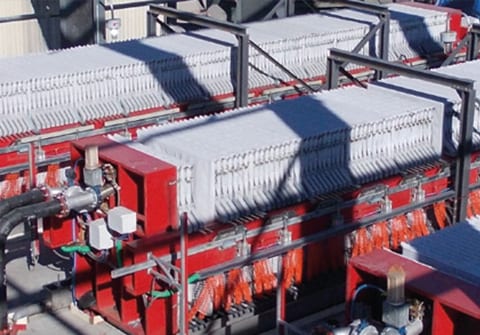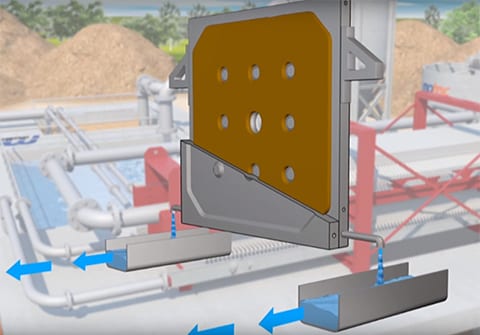
A filter press is a piece of equipment that separates liquids and solids. Specifically, the filter press separates the liquids and solids using pressure filtration across a filter media. Afterwards, the slurry is pumps into the filter press and is dewaters under pressure.
Basically, the filter press design is based on the dewatering volume and type of slurry. ChemREADY is an expert in liquid and solid separation and offers a wide range of filter press types and capacities to suit specific application needs for trouble-free, economical dewatering.
The four main components of a filter press:
During the fill cycle, the slurry pumps into the filter press and distributes evenly during the fill cycle. Solids build up on the filter cloth, forming the filter cake in the void volume of the plate. The filtrate, or clean water, exits the filter plates through the ports and discharges clean water out the side of the plates.
Filter presses are a pressure filtration method. As the filter press feed pump builds pressure, the solids build within the chambers until they are completely full of solids. This forms the cake. The filter cakes release when the plates are full, and the cycle is complete. Also, many higher capacity filter presses use fast action automatic plate shifters which speeding cycle time. Matec specifically designs their filter presses for fully automatic, 24-hour operation in a harsh environment such as mines or chemical manufacturing plants for wastewater treatment.

Filter presses can be built in a wide range of sizes, from small, lab-scale presses, to those with much larger capacities, such as those with 2000×2000 mm plates. Many industries use filter presses for liquid and solid separation, including:
The industry, application, and operational considerations will guide specifics such as:
The design of a filter press depends on a host of factors such as:
A customer is also able to add features/systems such as: